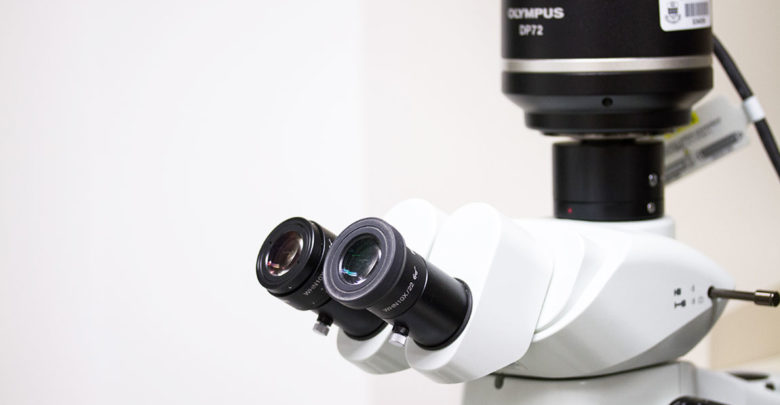 Tianbo Liu
Tianbo LiuAccording to Andrei Drabovich, men with infertility face setbacks during diagnostic tests and in treatment.
Drabovich is an assistant professor in the department of laboratory medicine and pathology at the University of Alberta. He and his colleagues have identified two proteins that are only present in intact sperm, which may lead to improved testing for men with infertility.
According to Drabovich, this discovery could lead to non-invasive diagnostic tests. This would help with diagnoses and treatment of the most severe forms of male infertility. There could also be further research in male contraception or cancers, he said.
Drabovich joined the study during his postdoctoral fellowship at the University of Toronto. It was there that he began collaborating with fertility clinics and Toronto’s Mount Sinai Hospital.
“As biochemists, we don’t have clinical expertise. We don’t work with patients, we only work with patient samples. So we teamed up with physicians, clinicians, and surgeons that know where there are gaps in current diagnostics,” he said.
Drabovich said that 15 per cent of couples experience infertility but more experience subfertility, a delay in conceiving. According to Drabovich, the male is responsible for about half the cases. He added that the use of assisted reproductive technologies like in-vitro fertilization are increasing, both in Canada and globally. He believes that this research will improve current in-vitro fertilization techniques with “novel diagnostic tools.”
Drabovich described male infertility as “a gradient from healthy fertility to subfertility to azoospermia.” The study specifically focused on azoospermia, which is a lack of sperm in semen. There are two types of azoospermia — obstructive and the more severe, non-obstructive.
“In obstructive azoospermia, there is a physical obstruction somewhere in the tract, which can be restored surgically. Non-obstructive is when there is a failure to produce semen,” Drabovich explained.
The research team first identified proteins in the male reproductive tract. This was done by examining samples from patients who have dealt with sub-fertility and more severe forms.
“We wanted to develop a non-invasive [method] so that the surgeons would have more information before the surgery,” says Drabovich
In more severe cases, patients may go through several open surgeries to find intact sperm to use in in-vitro fertilization.
“We wanted to develop a non-invasive [method] so that the surgeons would have more information before the surgery [and] can plan better,” Drabovich said.
They were able to identify 500 proteins specific to the human reproductive system. Through different procedures, they narrowed down the proteins until they found two that were specific to sperm in the later stage of development. The more developed a sperm is, the more intact it is, Drabovich said. The proteins found were specific to intact sperm.
The research team will now use imaging flow cytometry to measure these proteins in cells. Imaging flow cytometry measures each sperm cell one at a time while passing through the instrument. In this process, different coloured lasers label parts of the sperm, Drabovich explained.
One laser labels the head of the sperm and another labels it’s tail. Another laser labels the sperm’s nucleus. Both the head and the tail hold one protein each. The process also identifies the shape of the sperm, which shows it’s maturity. Drabovich added that the more distorted the shape is, the less mature the cell.
Imagine flow cytometry can be used on men with non-obstructive azoospermia as well, Drabovich said. Compared to the average man, the number of sperm someone with non-obstructive azoospermia has “would never be seen on a regular microscopic examination of semen.” However, imaging flow cytometry is able to see intact sperm that a microscopic examination could not.
“Imaging flow cytometry takes millions of images and in some of these patients, we find only 10 [sperm]. So it’s a very low occurrence, but they were morphologically intact, meaning there is a little bit of production of normal cells in these patients.”
As biochemists, Drabovich and his team want to understand the still-unknown function of the initial 500 proteins in the reproductive system. With further study, they could address female infertility and help the development of male contraceptives through a reversible strategy.
Next steps include increasing the number of patients in the study for the research to qualify for more scientific journals. The research team plans to involve clinics in Alberta, while continuing collaboration with partners in Toronto.




